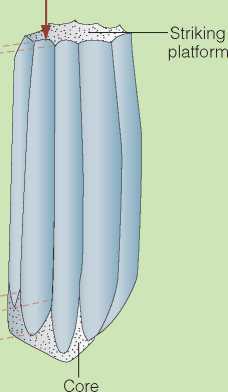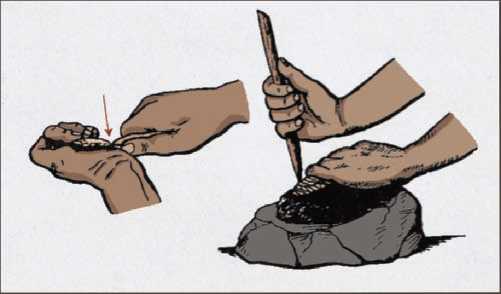The Neandertal question can be viewed as more than simply a fascinating discussion about interpreting the fossil evidence. It raises fundamental issues about the relationship between biological and cultural variation. Can a series of biological features indicate particular cultural abilities?
As we examined the fossil record throughout this chapter and others, we made inferences about the cultural capabilities of our ancestors based on biological features in combination with archaeological features. The increased brain size of Homo habilis noted around 2.5 million years ago supported the notion that these ancestors were capable of more complex cultural activities than australopith-ecines, including the manufacture of stone tools. When we get closer to the present, can we make the same kinds of assumptions? Can we say that only the anatomically modern humans, with high foreheads and reduced brow ridges, and not archaic Homo sapiens, even with their modernsized brains, were capable of making sophisticated tools and representational art?
Direction of force

Figure 9.5 During the Upper Paleolithic, a new technique was used to manufacture blades. The stone is worked to create a striking platform; long, almost parallel-sided flakes then are struck around the sides, providing sharp-edged blades.

Figure 9.6 Two methods used for pressure flaking in which a bone, antler, or wooden tool is used to press rather than strike off small flakes.
Supporters of the multiregional hypothesis argue that we cannot.160 They suggest that using a series of biological features to represent a type of human being (Neandertals) with certain cultural capacities (inferior) is like making assumptions about cultural capabilities of living humans based on their appearance. In living peoples, such an assumption would be considered stereotyping or even racism. Supporters of the recent African origins hypothesis counter that because their theory embraces African human origins, it could hardly be considered prejudicial.
While paleoanthropologists all acknowledge African origins for the first bipeds and the genus Homo, considerable disagreement exists with regard to the interpretation of the relationship between biological change and cultural change as we approach the present. The fossil and archaeological evidence from the Middle Paleolithic does not indicate a simple one-to-one correspondence between cultural innovations and a biological change preserved in the shape of the skull.




 World History
World History









